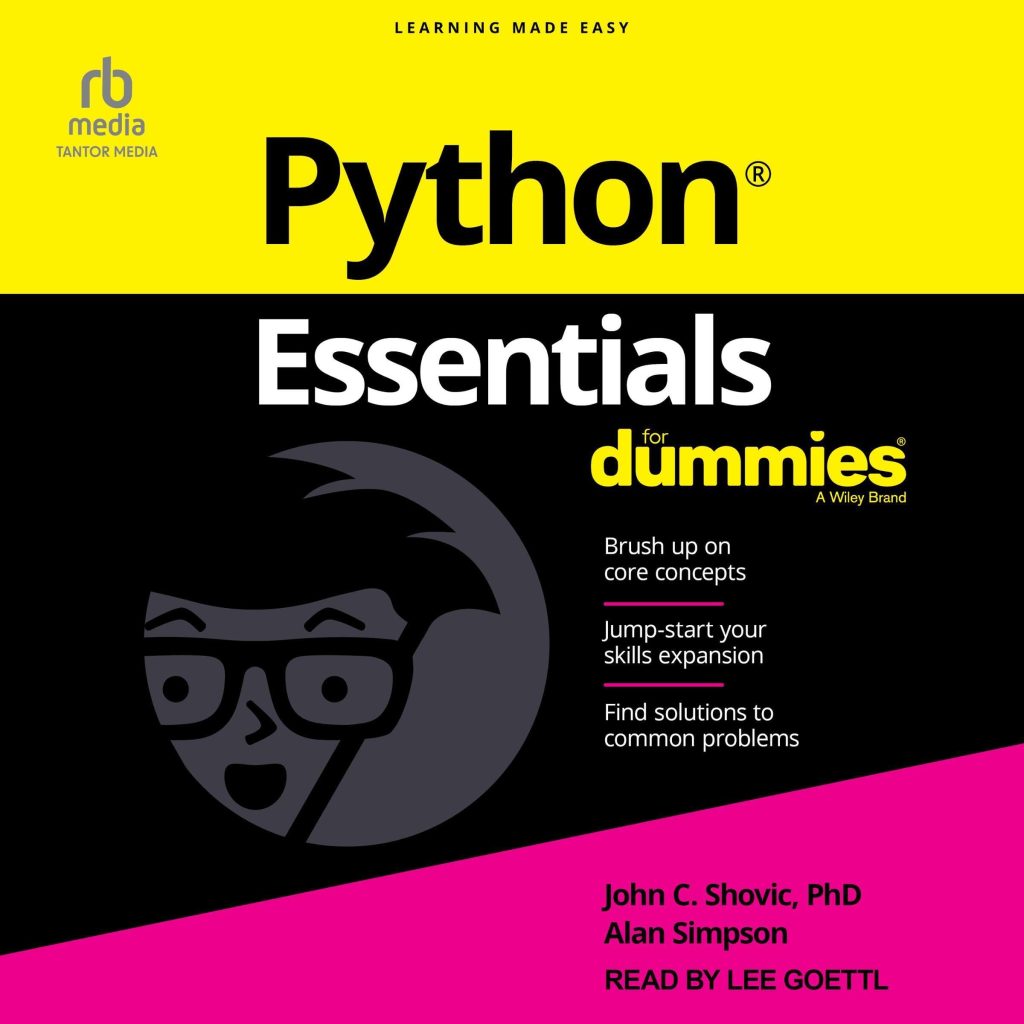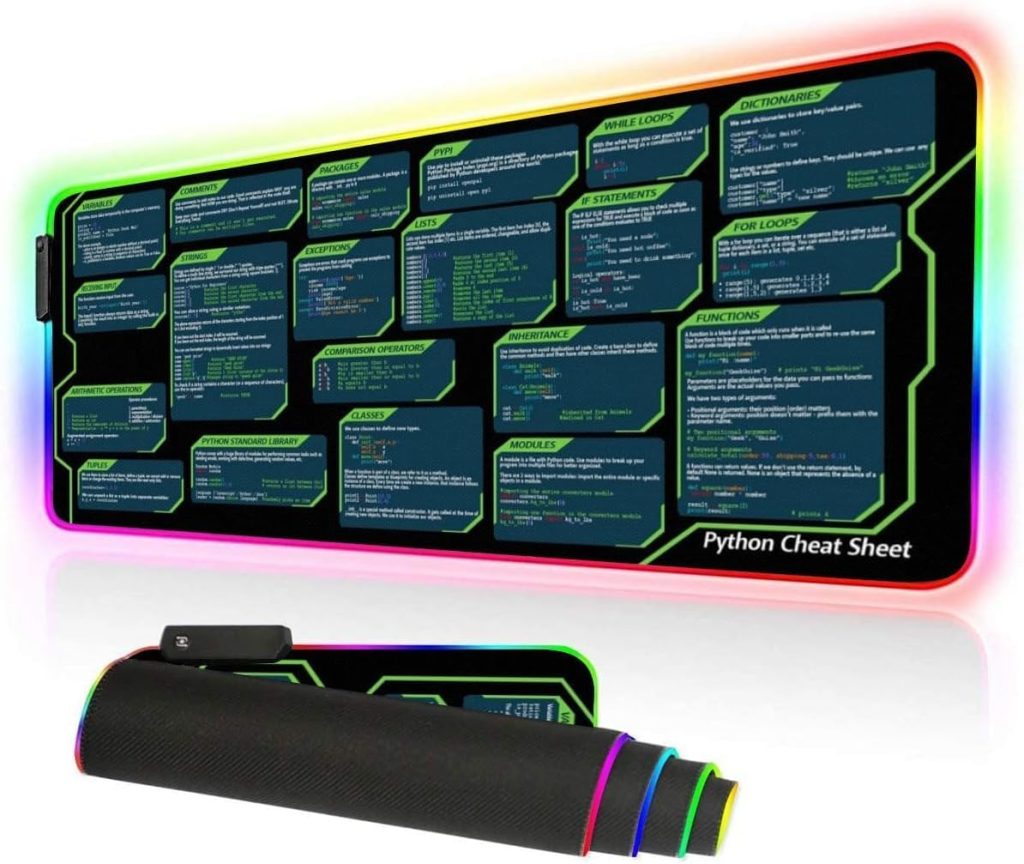
Lambda functions in Python are often described as anonymous functions, which means they are not necessarily bound to a name. Instead of declaring a standard function using the def keyword, you can create small, on-the-fly functions using the lambda keyword. This feature allows for quick definitions of simple functions that can be used in places where you might not want to formally define a function. Typically, lambda functions are used in functional programming constructs such as map, filter, and reduce.
Lambda functions can take any number of arguments but can only have a single expression. This unique structure makes them concise and ideal for short tasks. The result of the expression is implicit; you don’t have to provide a return statement.
Here is a basic example of a lambda function:
add = lambda x, y: x + y print(add(3, 5)) # Output: 8
In this example, add is a lambda function that takes two arguments, x and y, and returns their sum. Since it’s defined as a lambda function, it can be used without formally naming it, especially when used in combination with other functional programming tools.
Lambda functions are particularly useful for brief operations. For instance, you might want to apply a quick transformation to a data set without the overhead of a full function definition.
For example, if you want to double each item in a list, you can utilize a lambda function with map:
numbers = [1, 2, 3, 4] doubled = list(map(lambda x: x * 2, numbers)) print(doubled) # Output: [2, 4, 6, 8]
In this case, the lambda function is used to define a simple operation that doubles the values in the numbers list, showcasing how lambda functions can make your code cleaner and more readable.
Overall, understanding lambda functions enriches your programming toolkit, making it easier to write succinct code for small, single-use operations without cluttering your codebase with a high number of named functions.
Syntax and Structure of Lambda Functions
The syntax of lambda functions is simpler and involves the lambda keyword, followed by a list of parameters, a colon, and an expression. The general structure is as follows:
lambda arguments: expression
Here, arguments can be any number of variables you wish to pass to the function, and expression is the computation or operation using those arguments. The expression is a single line; thus, you should avoid complex logic within a lambda function.
For example, think a lambda function that calculates the square of a number:
square = lambda x: x ** 2 print(square(5)) # Output: 25
This lambda function takes a single argument x and returns its square. You can see how concise it’s compared to a typical function definition:
def square(x):
return x ** 2
While both code snippets achieve the same result, the lambda function does so with fewer lines and less overhead. This makes lambda functions particularly attractive for quick, throwaway functions.
If multiple arguments are required, you can simply list them separated by commas. For example, a lambda function that adds three numbers can be structured like this:
add_three = lambda x, y, z: x + y + z print(add_three(1, 2, 3)) # Output: 6
The simplistic syntax and structure of lambda functions allow for quick definitions that can enhance code readability, especially in contexts where only short functions are needed. However, it is important to use lambda functions judiciously, as overly complex expressions can diminish code clarity.
Use Cases and Applications of Lambda Functions
Lambda functions are highly versatile and find their way into various applications within Python programming. One of the primary use cases for lambda functions is in data manipulation, particularly when working with lists, dictionaries, and tuples. They excel in situations where a function is required temporarily, so that you can avoid cluttering your code with verbose function definitions.
Here are some of the most common scenarios where lambda functions are effectively utilized:
- Lambda functions work seamlessly with the map function to apply transformations to all items in an iterable. For example, if you need to convert a list of temperatures from Celsius to Fahrenheit, a lambda function can simplify this task:
celsius = [0, 10, 20, 34.5] fahrenheit = list(map(lambda c: (9/5) * c + 32, celsius)) print(fahrenheit) # Output: [32.0, 50.0, 68.0, 94.1]
- Lambda functions are also commonly used with the filter function, which extracts items from an iterable based on a specified condition. For instance, if you want to filter out even numbers from a list:
numbers = [1, 2, 3, 4, 5, 6] odd_numbers = list(filter(lambda x: x % 2 != 0, numbers)) print(odd_numbers) # Output: [1, 3, 5]
- When you need to sort a list of tuples or objects based on specific attributes, lambda functions can serve as key functions. That is particularly useful for sorting lists of dictionaries or tuples by specific keys or values. For instance:
data = [('apple', 2), ('banana', 5), ('cherry', 1)]
sorted_data = sorted(data, key=lambda x: x[1])
print(sorted_data) # Output: [('cherry', 1), ('apple', 2), ('banana', 5)]
- The reduce function, which is found in the functools module, can also utilize lambda functions to condense a list down to a single value. For example, to find the product of all elements in a list:
from functools import reduce numbers = [1, 2, 3, 4] product = reduce(lambda x, y: x * y, numbers) print(product) # Output: 24
Lambda functions can also be particularly useful in GUI programming, where callback functions need to be defined at runtime based on user interactions. Another notable application is in sorting with custom criteria, or when passing simple functions as arguments to higher-order functions.
Lambda functions provide a powerful and expressive way to handle simple operations and manipulations in your code, making them indispensable for many programming tasks. Their ability to serve as concise, anonymous functions facilitates clear, manageable code, especially in functional programming contexts.
Comparing Lambda Functions with Regular Functions
When comparing lambda functions with regular functions in Python, several notable differences and similarities come to light. Understanding these can help you decide when to use either approach in your programming practices.
Definition and Scope: A regular function is defined using the def keyword and can include multiple expressions, lines of code, and extensive logic. In contrast, a lambda function is limited to a single expression and cannot contain complex operations or statements such as loops or conditionals.
def add(x, y):
return x + y
# Regular function usage
print(add(5, 3)) # Output: 8
add_lambda = lambda x, y: x + y # Lambda function usage print(add_lambda(5, 3)) # Output: 8
Both examples achieve the same result of adding two numbers, but the regular function allows for more complexity and additional documentation if needed.
Return Statements: In a regular function, you must explicitly use a return statement to provide an output. With lambda functions, the output is automatically returned as a result of the expression following the :. This contributes to the lambda function’s brevity.
Use Cases: Regular functions are ideal for scenarios where you require a well-defined set of operations, potentially including error handling, multiple statements, and extensive logic. Lambda functions shine in contexts that demand quick, throwaway functions where the emphasis is on simplicity, such as in functional programming applications like map, filter, or sorted.
def filter_even(numbers):
return list(filter(lambda x: x % 2 == 0, numbers))
evens = filter_even([1, 2, 3, 4, 5, 6])
print(evens) # Output: [2, 4, 6]
# Using a lambda function directly in filter numbers = [1, 2, 3, 4, 5, 6] evens_lambda = list(filter(lambda x: x % 2 == 0, numbers)) print(evens_lambda) # Output: [2, 4, 6]
Readability and Efficiency: Lambda functions can enhance code readability when used appropriately by reducing boilerplate code. However, overusing them or implementing complex logic inside a lambda can lead to decreased clarity. Regular functions, while often more verbose, provide better structure and documentation potential, making them more suitable for complex operations.
Limitations: Lambda functions are limited in functionality; their single-expression constraint can restrict any substantial logic, making regular functions necessary where more extensive processing or operations are needed.
While lambda functions offer a powerful tool for specific scenarios demanding simplicity and brevity, regular functions remain essential for more complex tasks that require maintainability and detailed logic. Understanding when and how to effectively leverage both can significantly optimize your Python programming experience.
Common Mistakes and Best Practices
When working with lambda functions, it’s essential to be aware of common mistakes that can hinder code clarity and functionality. Here are some pitfalls to avoid when using lambda functions in your Python projects:
- Lambda functions should ideally be simple. Attempting to embed too much logic in a single expression can lead to confusion. For example, instead of writing a complicated lambda function:
complex_lambda = lambda x: (x ** 2 if x > 0 else -x ** 2) + (x - 5)
It is better to define a regular function that enhances readability:
def complex_function(x):
if x > 0:
return x ** 2
else:
return -x ** 2 + (x - 5)
- Lambda functions can not create variables with local scope; they only have access to variables in their containing scope. Be cautious with variable names to avoid unexpected results.
- While lambda functions are often paired with these functions, misuse can lead to performance issues. For instance, using lambda with a generator can yield inefficient code. Ponder alternatives if the use-case is more complex.
- Since lambda functions are anonymous, it can be easy to lose track of what they do if they’re not documented properly. Always include comments or context around their usage for clarity.
To exemplify best practices, here are several tips on effectively using lambda functions:
- Aim to use lambda functions for simpler tasks like simple calculations or transformations. For example:
squared = lambda x: x ** 2 print(squared(4)) # Output: 16
- If using lambda functions in a larger, complex piece of code, think adding a comment or using a named function if the operation is critical.
- Avoid nesting lambda functions within each other. This can create harder-to-read code:
# Poor practice result = map(lambda x: (lambda y: y ** 2)(x), [1, 2, 3])
Instead, separate them out:
square = lambda y: y ** 2 result = map(square, [1, 2, 3])
- Always ensure lambda functions are suitable for the task at hand. If the logic is going to expand or evolve, a full function definition usually eschews complications in the long term.
By adhering to these best practices and being aware of common mistakes, you can make effective use of lambda functions, thereby enhancing the clarity and efficiency of your Python code.






